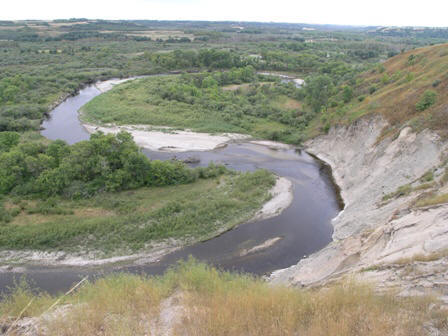Pakistan has been bestowed by a unique natural resource i.e., water springs and streams emanating from the Himalayan, Karakoram and Hindukush mountain ranges. These mountains are important watersheds from ecological, social and economic point of view and for the sustained water resource. About 90 % of Pakistan’s water supply from the Uplands makes up about 40% of the land area. Within the uplands the population is dependent on snow and rain for production of food, fiber, fuel, fodder and water. In the downstream where almost 75% of Pakistan’s population lives, benefits from the upland water are household water, electricity, irrigation supply, fish production, growth of Mangrove forest and Riverine forest survival. It has been reported that there are about 250 sub-watersheds which drains to the Indus Basin. Proper management of the watersheds is the topic of discussion over the years. Changes in these upland watersheds have resulted from a range of natural and anthropogenic factors over the years. The anthropogenic factors include changes in farming systems, over-abstraction of water, over-grazing, deforestation and pollution.
Recognition of the importance of watershed management in Pakistan dates back to more than 90 years Watershed management is important in order to regulate the flow of stream water and reduce soil erosion and mitigate sedimentation of our reservoirs. According to a report “sedimentation of Tarbela and Mangla reservoirs”, the average annual sedimentation rate in Tarbela dam is 0.132 BCM (billion cu.m) while in Mangla dam 0.038 BCM. Thus the storage capacities have been decreased up to 28.23% for Tarbela dam and 20% for Mangla dam.
De-sedimentation of these reservoirs have also started. In fact due importance is not given to manage the upland watersheds which are the source of sedimentation and erosion. Management of these watersheds can be reflected from the Forest policies of Pakistan. By peeping into the history of Forestry in Pakistan, it is established that the first Forest Policy of 1894 formulated by the Britishers provided direction to this subject. Then, in Land Preservation Act of 1900 and the Forest Act of 1927 focused on maintaining the forest in upland watersheds in order to preserve the flow of water to the irrigated plantations of the Indus plains. In 1957, construction of Mangla dam provided support for a series of watershed management studies and efforts to reduce quantities of sedimentation flowing into the reservoirs. The policy directives of 1962 also stressed that the mountainous areas should be checked for degradation ensure watershed reclamation and afforestation of the waste lands. Then 1991 Forest policy recommended watershed planning and coordination as a federal function, with implementation continuing to be the responsibility of provinces. Now the current Forest policy of 2001 (draft) focuses on the Participatory approach of forest management. So it can be inferred that in Khyber Pakhtunkhwa the only department responsible for the watershed management is the Watershed department, which is under the auspices of Forest department. Similarly, Gilgit Baltistan which is also important for water resource. But there is no department to manage these forested mountain watersheds. Thus flash floods and a cloud burst brings with it massive landslide and sediments that ultimately deposit in our reservoirs.
The only solution lies in maintaining the ecological and the natural ecosystem through the protection, sustainable utilization and land-use plan of Conifer forests, alpine and sub-alpine pastures. Several projects had already been conducted by several governmental and non- governmental organizations like Forest department, WWF- Pakistan, IUCN, WFP, ICIMOD, etc. and PFI (Pakistan Forest Institute, Peshawar) is also working in Research sector of this subject. Currently, WWF-Pakistan is running several projects in Zhob, Galliat, Chitral and flood affected areas of Swat to manage the watersheds which is a step forward in this case.
Last but not the least there should be a separate Watershed management legislation, policy, guidelines or plan in order to manage the mountain ecosystems and upland watersheds. As in Indiana State of US there is a separate watershed management plan for each river, similarly in California and many others. Then in Russia, China, Indonesia, etc. but it’s a fact that nature cannot be defeated but the floods resulting from the destruction of natural ecosystem is the cry of nature.




